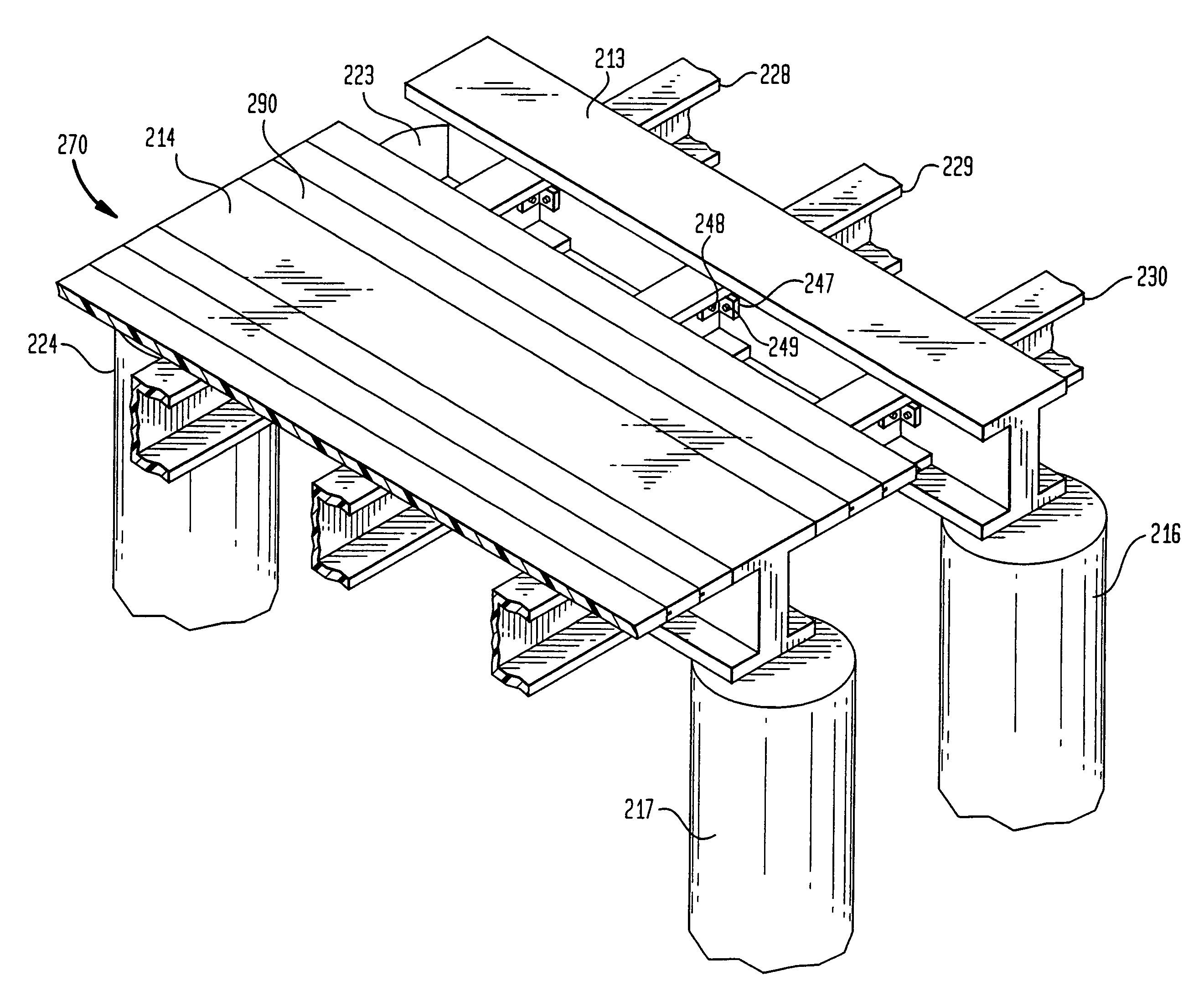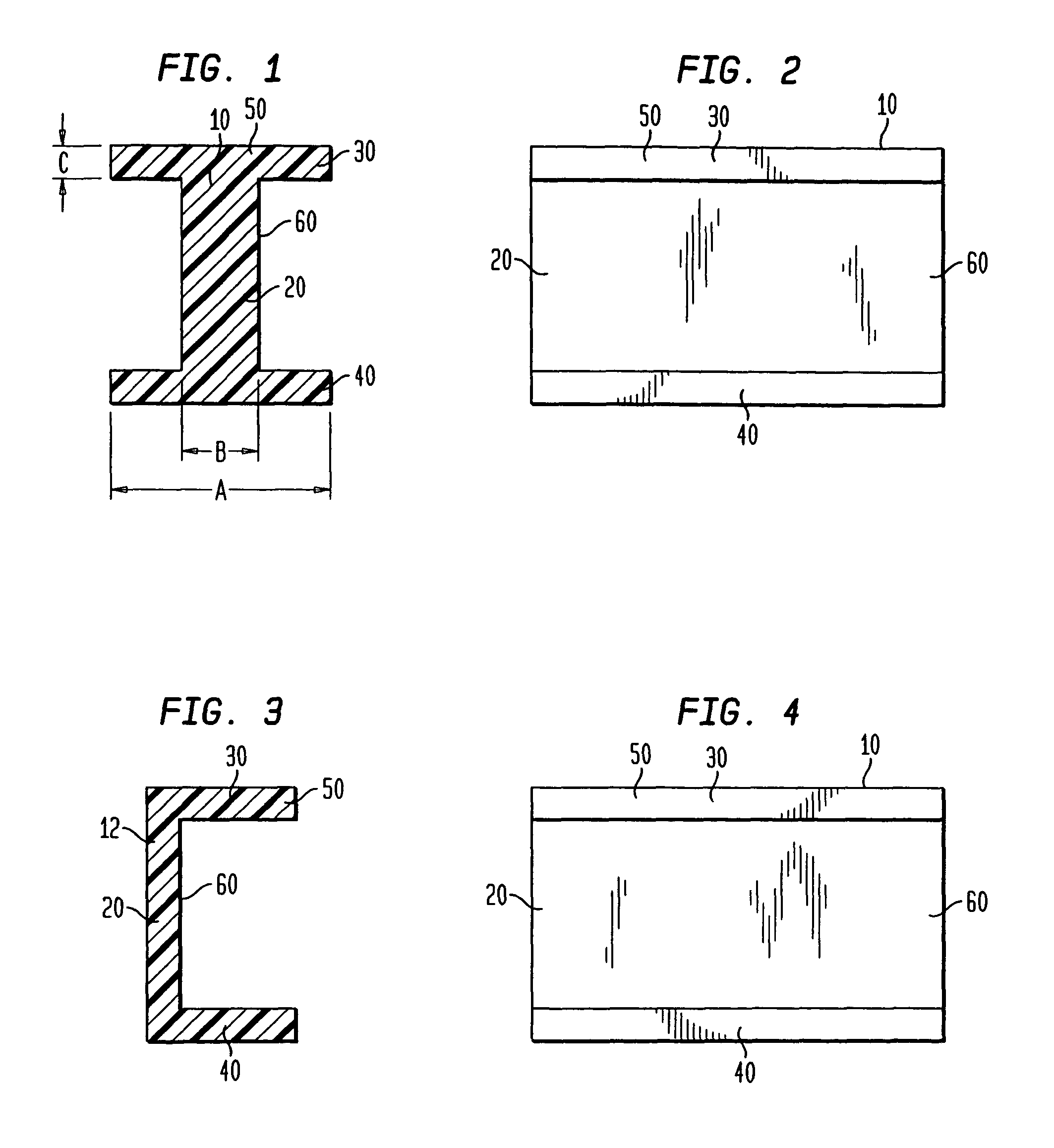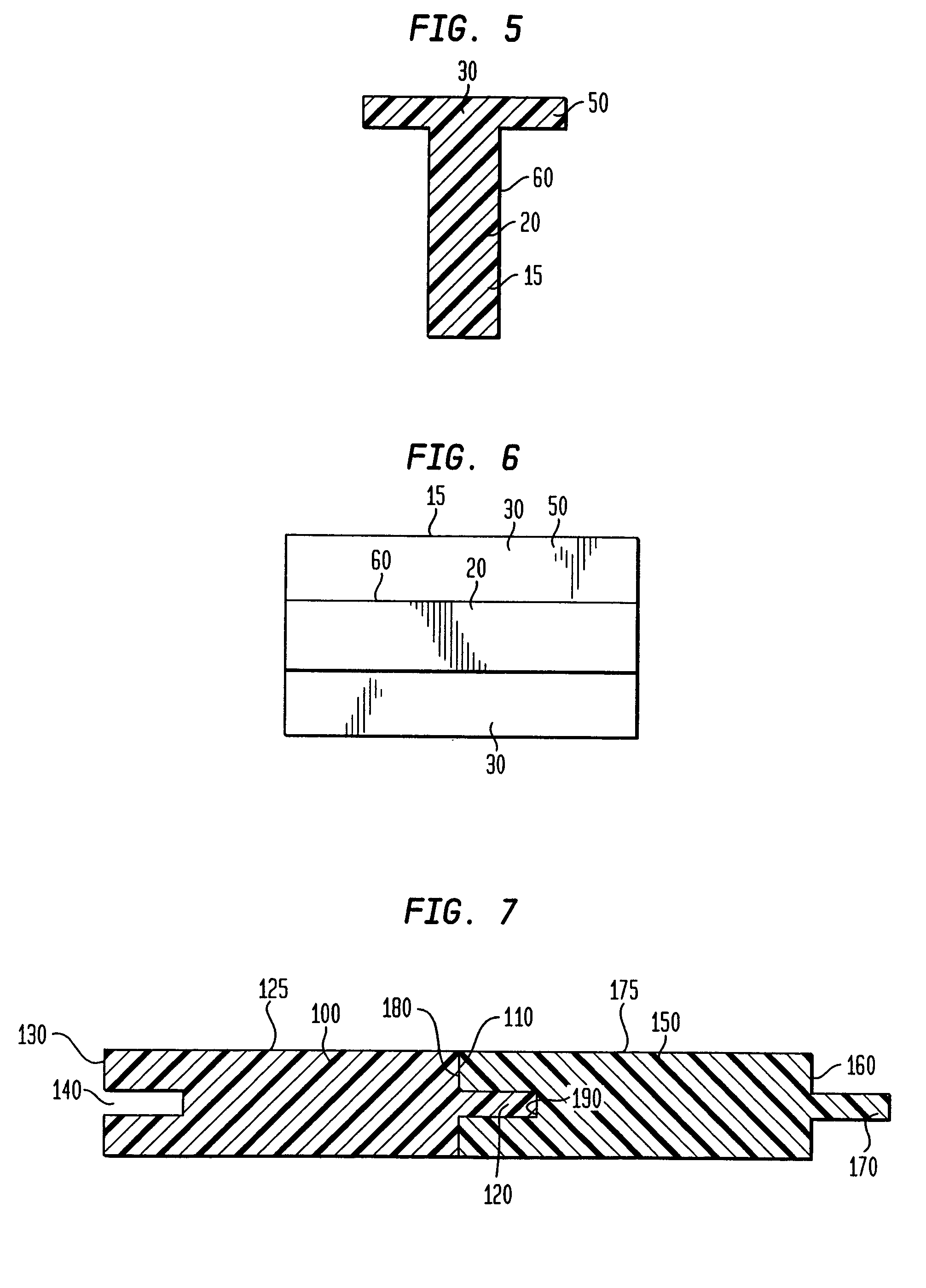Use of recycled plastics for structural building forms
a technology of plastics and structural building forms, applied in the field of new building forms, can solve the problems of toxic, now being realized, and the increasing popularity of chemically treated lumber, and achieve the effects of reducing the initial bridge cost, long-term maintenance cost, and less maintenan
- Summary
- Abstract
- Description
- Claims
- Application Information
AI Technical Summary
Benefits of technology
Problems solved by technology
Method used
Image
Examples
Embodiment Construction
[0030]The modular plastic structural composites of the present invention are prepared using the co-continuous polymer blend technology disclosed by U.S. Pat. Nos. 5,298,214 and 6,191,228 for blends of a high-density polyolefin and polystyrene and by U.S. Pat. No. 5,916,932 for blends of a high-density polyolefin and thermoplastic-coated fiber materials. The disclosures of all three patents are incorporated herein by reference.
[0031]As disclosed in U.S. Pat. No. 6,191,228 composite materials may be employed containing from about 20 to about 50 wt % of a polystyrene component containing at least about 90 wt % polystyrene and from about 50 to about 80 wt % of a high-density polyolefin component containing at least about 75 wt % high-density polyethylene (HDPE). Composite materials containing about 25 to about 40 wt % of a polystyrene component are preferred, and composite materials containing about 30 to about 40 wt % of a polystyrene component are even more preferred. Polyolefin compo...
PUM
| Property | Measurement | Unit |
|---|---|---|
| angle | aaaaa | aaaaa |
| length | aaaaa | aaaaa |
| width | aaaaa | aaaaa |
Abstract
Description
Claims
Application Information
 Login to View More
Login to View More - R&D
- Intellectual Property
- Life Sciences
- Materials
- Tech Scout
- Unparalleled Data Quality
- Higher Quality Content
- 60% Fewer Hallucinations
Browse by: Latest US Patents, China's latest patents, Technical Efficacy Thesaurus, Application Domain, Technology Topic, Popular Technical Reports.
© 2025 PatSnap. All rights reserved.Legal|Privacy policy|Modern Slavery Act Transparency Statement|Sitemap|About US| Contact US: help@patsnap.com



